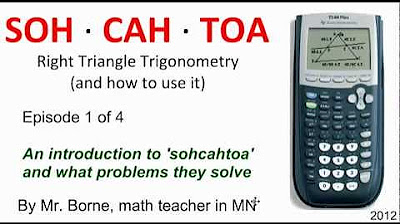Solve any Star Pattern program in Python
Summary
TLDRThis video teaches how to solve star pattern programs in Python by focusing on two basic triangles: an increasing triangle and a decreasing triangle. By mastering these two building blocks, viewers can create complex patterns. The video covers the importance of loops, how to print rows and columns with characters or spaces, and how to adjust the loops for different shapes like squares, triangles, and diamond patterns. It emphasizes the use of nested loops, the role of spaces, and how combining basic shapes can solve more advanced pattern problems.
Takeaways
- 😀 Understand the basics: To solve any star pattern problem, focus on mastering two basic shapes—an increasing triangle and a decreasing triangle—using loops.
- 😀 Patterns are made using blocks: Patterns can be constructed by joining basic building blocks like triangles, which can be filled with stars, hashes, or any other character.
- 😀 Use spaces to control alignment: Space characters help manage the positioning of stars and other characters in patterns, ensuring proper alignment.
- 😀 Loops are essential: All pattern problems rely heavily on loops (especially nested loops), so understanding Python's loop structures is key to solving pattern problems.
- 😀 Input size handling: You can either take the size of the pattern from the user via the input function or pass it as a parameter if the question provides it.
- 😀 Inner loops control columns: The inner loop is responsible for printing the number of stars or characters in each row, while the outer loop controls the rows.
- 😀 Print formatting: Use the 'end' parameter in the print function to prevent automatic line breaks, which helps control how characters are printed within the same row.
- 😀 Understanding pattern types: Patterns can be simple (like squares or triangles) or more complex combinations of increasing and decreasing triangles.
- 😀 Combining triangles to form patterns: More complex patterns, such as hills or diamonds, can be made by combining multiple increasing and decreasing triangles.
- 😀 Key takeaway for writing pattern programs: Always remember to link the outer loop to rows and the inner loop to columns, ensuring that each row and column is properly printed with the correct number of characters.
Q & A
What is the main purpose of this video?
-The video aims to teach how to solve any star pattern program in Python by focusing on understanding basic patterns (increasing and decreasing triangles) and using those to form complex patterns.
Why doesn't the speaker suggest learning every individual pattern?
-The speaker suggests understanding the fundamentals of patterns, such as increasing and decreasing triangles, and learning how to combine them, rather than memorizing each individual pattern.
What are the two basic blocks needed to create any pattern?
-The two basic blocks needed are the increasing triangle and the decreasing triangle.
How does the speaker explain the concept of spaces in patterns?
-The speaker explains that spaces in patterns are created by printing spaces before the stars on the same row. These spaces ensure the stars are positioned correctly without moving to a new row.
What role does the 'size' variable play in the patterns?
-The 'size' variable, denoted as 'n', defines the number of rows in the triangle pattern. It can be taken from user input or passed as a parameter in a function.
How can the pattern program be adapted for different characters (e.g., hashes or dollar signs)?
-Instead of using the asterisk ('*') character, you can replace it with any other character, such as a hash ('#') or a dollar sign ('$'), to create different patterns with those symbols.
What is the significance of the 'end' parameter in the print statement?
-The 'end' parameter is used to prevent the print function from starting a new line. For example, using 'end=
How can we ensure that a square pattern prints correctly?
-To print a square pattern, use a nested loop: the outer loop prints rows and the inner loop prints the stars in each row. Make sure to print a new line at the end of the outer loop and handle the 'end' parameter correctly to maintain the row structure.
How does the decreasing triangle pattern work?
-In a decreasing triangle pattern, the outer loop runs for 'n' rows, and the inner loop prints a decreasing number of stars starting from 'n' stars in the first row, followed by 'n-1' stars in the second row, and so on until the last row prints only one star.
How do you combine multiple patterns (e.g., space and star triangles) in the same row?
-To combine patterns like a decreasing space triangle and an increasing star triangle in the same row, use two nested loops. The first loop prints spaces, and the second loop prints stars, ensuring both occur on the same row.
Outlines

This section is available to paid users only. Please upgrade to access this part.
Upgrade NowMindmap

This section is available to paid users only. Please upgrade to access this part.
Upgrade NowKeywords

This section is available to paid users only. Please upgrade to access this part.
Upgrade NowHighlights

This section is available to paid users only. Please upgrade to access this part.
Upgrade NowTranscripts

This section is available to paid users only. Please upgrade to access this part.
Upgrade NowBrowse More Related Video

Kesebangunan Pada Segitiga. Part 2, Rumus-rumus

Aturan Sinus, Aturan Cosinus dan Luas Segitiga | Matematika Wajib Kelas X

Menentukan Nilai Trigonometri Segitiga Siku Siku Perbandingan Trigonometri segitiga Siku Siku

Bissetrizes e Incentro - MAT GIO: Matemática com Giovanna

SOHCAHTOA using the TI-84 Plus

Matematika Kelas 8 Bab 5 Segitiga dan Segi Empat - hal. 138 - 140 - Kurikulum Merdeka
5.0 / 5 (0 votes)